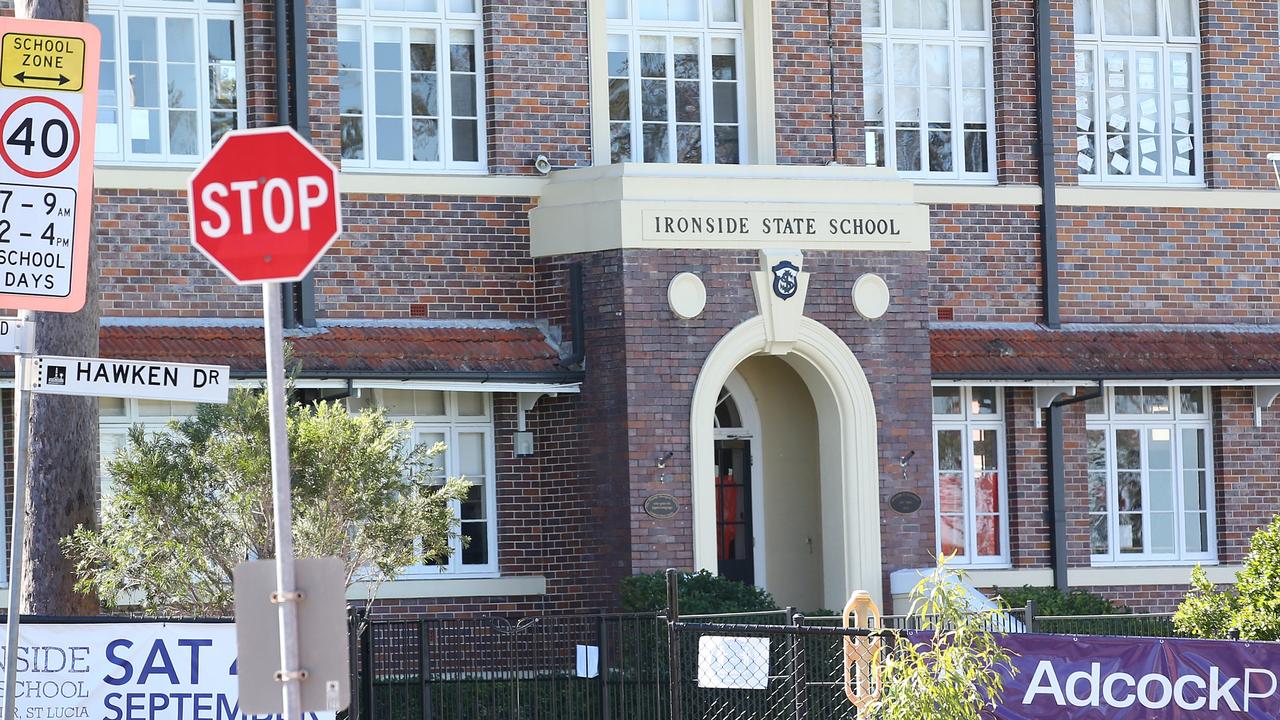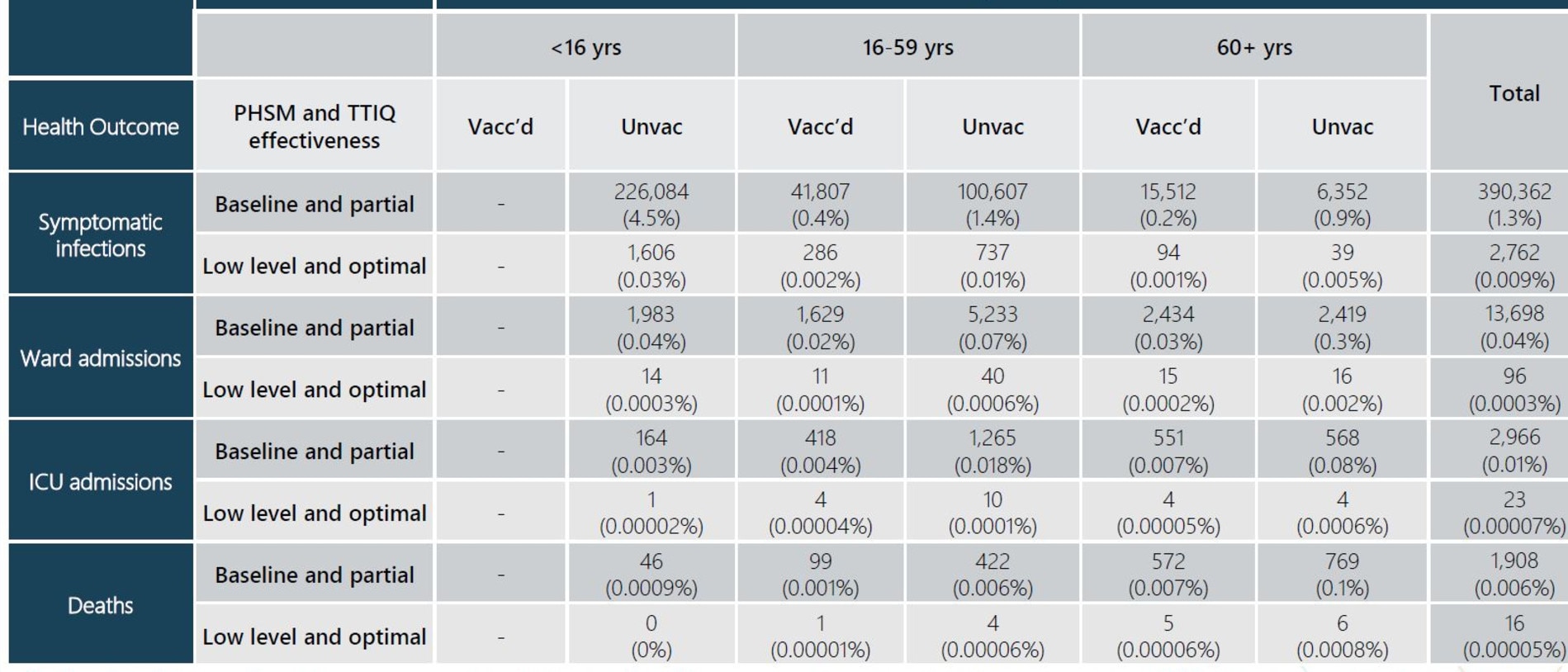‘Optimistic’ figure may bring down Australia’s plan to end lockdowns
Many Australians are looking forward to the end of lockdowns but there’s one figure that could bring the government’s plans crashing down.
Australians have finally been given an idea of when they can say goodbye to lockdowns but one crucial figure has the potential to derail the country’s ticket to freedom.
Last week Prime Minster Scott Morrison revealed Australia could begin to ease its way out of lockdowns once 70 per cent of adults were vaccinated.
But experts have warned that figures the Doherty Institute relied on for the government modelling are “woolly” and could see much worse scenarios play out in Australia if they turn out to be wrong.
In particular, there is significant uncertainty around how infectious Delta is, and experts say the Doherty modelling has used an optimistic figure for phasing out lockdowns.
Infectious diseases physician Professor Emma McBryde of James Cook University told news.com.au that most of the world estimated Delta’s reproductive rate, also know as R0, as somewhere between 5 and 10.
In fact the US Centers for Disease Control and Prevention has estimated it is as infectious as chickenpox and that each infected person infects on average eight or nine others.
The Doherty modelling uses a much lower figure of 3.6, partly because it assumes some people will continue to take measures to avoid infection even if they are not required to by restrictions.
The difference between 3.6 and 5 is significant.
“If the R0 is as high as five, then it’s very important that we vaccinate teenagers, down below the 15-year-old cut-off otherwise we won’t reach herd immunity and they will continue to be reservoirs of infection,” Prof McBryde said.
If the figure 3.6 is used, then it is possible to reach herd immunity without vaccinating children.
“I think it’s a bit woolly and I don’t think they can sit there and be secure that it’s the right number,” Prof McBryde said.
RELATED: Lockdowns may be required even once vaccine targets reached

Her concern is shared by Melbourne University epidemiologist Professor Tony Blakely, who noted the 3.6 figure was based on the R0 in NSW of March this year, a period when there were minimal social restrictions and no major outbreaks.
Prof Blakely believes there were too few cases in NSW at this time to say for sure that 3.6 is a realistic number.
Given that the estimates for deaths and hospitalisations vary a lot depending on this number, he believes it needs more work.
Prof McBryde said the R0 was one of the most important components of any modelling because it could lead to such different results. In her own work she has looked at three different R0 scenarios: 3, 5 and 7.
She said the difference between setting the R0 at 3.6, compared to 5, included the potential for children to keep the epidemic going.
“R0 3.6 means the virus is not infectious enough, but if it’s 5, then children can sustain the epidemic.”
Prof McBryde pointed out that children already seemed to be driving cases in Queensland and to some extent in NSW.
“So I think we really have to consider how infectious the virus is,” she said.
RELATED: Bad news for NSW amid Doherty modelling

That doesn’t mean she disagrees with relaxing lockdowns once 70 per cent of adults are vaccinated.
“My view is that once everyone over the age of 12 has had the opportunity to get vaccinated, that’s when we should open up,” she said.
“We can’t force people to get vaccinated and if we are sitting on 69 per cent, do we just sit around and wonder what plan B is? I think we need a pragmatic measure of when we can open up.”
The cost of getting rid of lockdowns
While Prof McBryde believes the Doherty figures are a bit rosy, she said the methodology appeared sound, although this was hard to say for sure without seeing the underlying code, which has not been released.
“It’s somewhat of an optimistic picture, although it’s good that it’s preparing Australians for the fact that there will be transmissions and deaths,” she said.
“I’m just a bit concerned that if things don’t turn out as planned, people will baulk at opening up.”
Prof McBryde is worried that the modelling may appear to some as if it’s continuing to aim for zero tolerance of any Covid-19 transmission.
“I don’t want people to think that 70 per cent is fine, then be asking why are there cases, why are there deaths? And be surprised by that, because that’s what’s going to happen,” she said.
The Doherty modelling estimates there would still be 1908 deaths within the first 180 days of a serious outbreak, even if 70 per cent of adults were vaccinated using an “transmission reducing” approach that focuses on those aged 20-39.
This would come down to 16 deaths, if low level restrictions, as well as optimum test, trace, isolate and quarantine measures were in place.
“I think (16 deaths) is unrealistic, I don’t think we are going to get down to 16,” Prof McBryde said.
“I hope we could, but I guess we’ll find out.”
Sixteen people have already died in NSW’s latest outbreak in 49 days, and there is an average of 642 deaths from the flu every year according to figures from 2016-2019.
However, the Doherty modelling only looks at the first six months of an outbreak and in some scenarios, cases may not yet have peaked, meaning there could be more deaths and cases for many months after this time period.
RELATED: New vaccine focus on virus superspreaders

‘We’ll be exposed to Covid’
Prof McBryde noted that opening up with 70 per cent of adults vaccinated (which equals 56 per cent of Australia’s total population) won’t provide much herd immunity.
That means the benefits of vaccination will mainly be felt by those who’ve had the jab, while others in the community could become infected and die.
“If we open up at 70 per cent vaccinated, we will be exposed to Covid and those who are not vaccinated will have a risk of dying, which will depend on their age, but the fatality rate is about 1 in 200,” Prof McBryde said.
“It depends on how effective the ‘light touch’ restrictions are but the herd protection is fairly small, therefore the risk to unvaccinated people is only slightly better than no vaccination.”
It’s expected around 2700 people would get symptomatic Covid-19 infections, with around 58 per cent of cases estimated to be among unvaccinated children under the age of 16.
Prof McBryde said children were less likely to get seriously ill but it was still unclear whether Delta was different. The impacts of ‘long Covid’ on children were also unclear.

“It might be worth vaccinating children for their own sake and for the community’s sake and that has to be considered for sure,” she said.
Some people think Covid-19 needs to be treated like the common cold, where children get it and build up immunity so once they’re an adult, no one dies from it.
“I think we won’t know for a generation or so whether that’s the case,” Prof McBryde said.
“It’s best to play it safe, I’d like to see a serious conversation about whether children and certainly teenagers should be vaccinated.”
Prof McBryde said Australia needed to get to the point where it didn’t concentrate on every Covid case.
“I don’t want to see Australia spending another year trying to case zero Covid,” she said.
“I don’t think that’s realistic and I think we’ve got to get used to the idea that it’s no longer an option.”
Vaccinating against Covid-19 is the only way for Australians to get their normal lives back, but as a nation we’re struggling.
News.com.au’s Our Best Shot campaign answers your questions about the Covid-19 vaccine rollout.
It’s fair to say the vaccine rollout has confused Australians. We’ll cut through the spin and give you clear information so you can make an informed decision.
charis.chang@news.com.au | @charischang2




